Last-Minute NYC Holiday Gift Guide 🎁
We’ve created a holiday gift guide with presents for the intrepid New Yorker that should arrive just in time—


After traveling through four boroughs to find art along the B/D/F/M lines, my next excursion kept me to the two cross-town trains that many Brooklynites depend upon. Neither train has express companions, so every station with Arts for Transit work is always available to straphangers.
I started up in Queens at the terminal station for the G train, 23rd Street — Ely Avenue / Long Island City — Court Square. Elizabeth Murray’s Stream (2001) adorns the transfer between the E and M trains and the G train. The artist was influenced by the movement of commuters through the passageway, emphasized by the motion of the automated walkways, and she mimicked it in her mosaic. During rush hour especially, “flood” might be a more accurate metaphor.
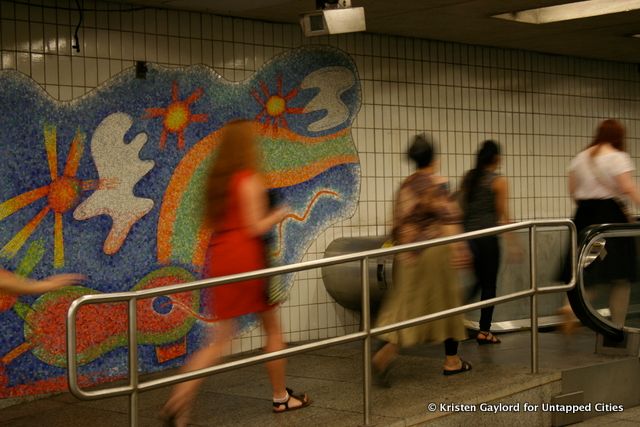
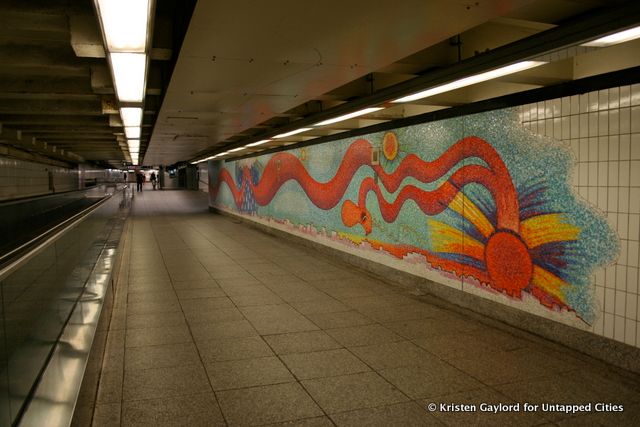
Elizabeth Murray, Stream, 2001.
At the same station, Frank Olt crafted four murals called Temple Quad Reliefs (1992) that draw upon archetypal architectural forms. The high reliefs make a “temple” out of the station, unusual notes of solemnity and grandeur, and, according to the artist, symbolize traits such as “endurance, renewal and perpetuity.” They seem to hint that the infrastructure of our public transit system is comparable to the temples and tombs of previous civilizations””that these will be our “ruins”””and they may be right.
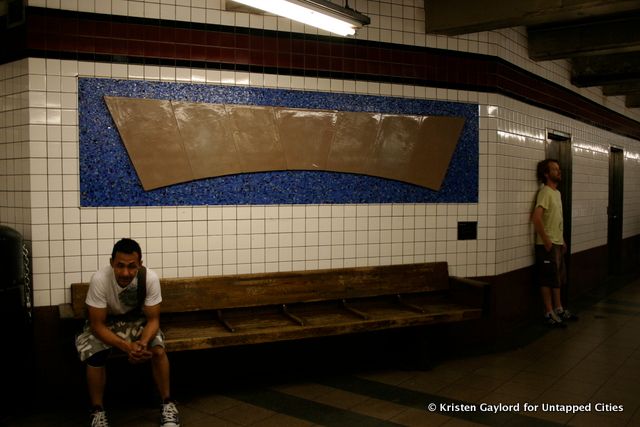
Frank Olt, Temple Quad Reliefs, 1992.
Next, I took the G train down to Metropolitan Avenue / Lorimer Street to view the oft-photographed murals by Jackie Chang, Signs of Life (2000). Chang has delivered verbal dialectics, capturing their tension in mosaic: faith/fate, same/sane, history/your story. The minimal but elemental pictorial accompaniments””mountains, rocks, water””add another dimension of interpretation, as Chang asks commuters to puzzle through philosophical juxtapositions on their daily commute. Or they can just admire the graphic compositions, which requires about all the mental energy I can muster at 8:30am.
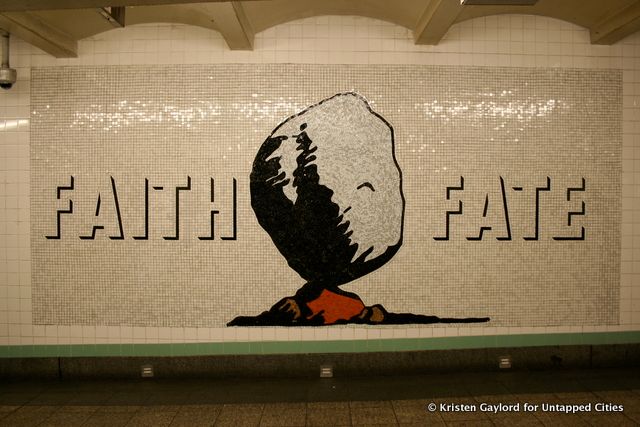
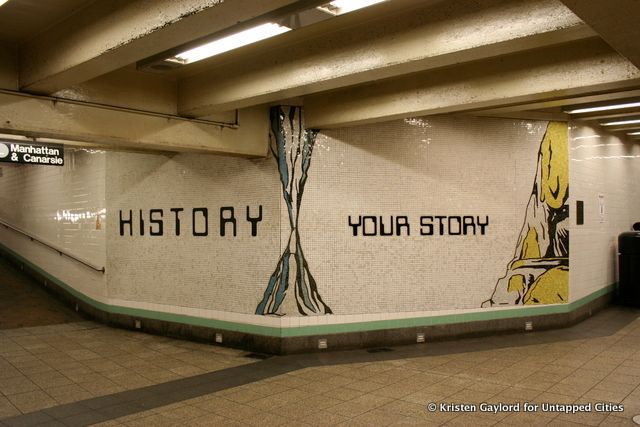
Jackie Chang, Signs of Life, 2000.
From Lorimer Street station I transferred to the L and rode it all the way out to the penultimate stop, E. 105th Street. There Michael Ingui fashioned Crescendo (2007), a tumultuous composition of steel and colored glass. Ingui’s scribble-like composition, which covers three sides of the platform entryway, continuously transforms, as the sunshine, doing the work of an artist, blends and reflects the colors and patterns against each other, ever changing as the day.
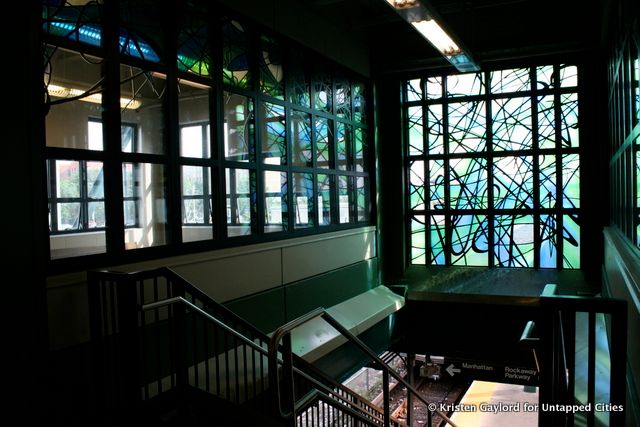
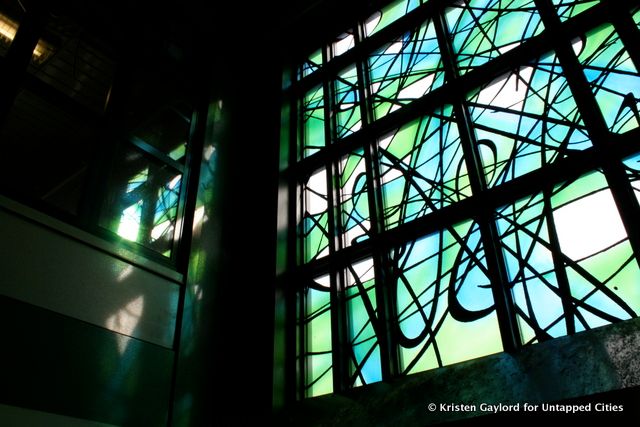
Michael Ingui, Crescendo, 2007.
I got off at the next station west, New Lots Avenue, to examine Eugenie Tang’s 16 Windows (2007), which are in a medium very familiar to borough-dwellers: the outdoor platform windows. Tang features daily urban life in her compositions, with common morning rituals on the Manhattan-bound side and evening ones on the Brooklyn-bound one, mimicking the rush hour standard. The windows mirror our own lives back to us, aestheticizing and elevating them.
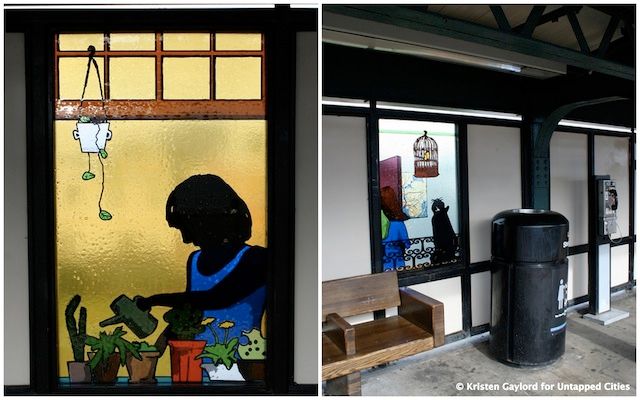
Eugenie Tang, 16 Windows, 2007.
At Myrtle-Wyckoff Avenues, one must look up to catch Cadence Giersbach’s From Earth to Sky (2006). Giersbach mimics the ceiling mosaics and frescoes of sacred spaces through the ages with her domed composition, but instead of Christ in the center is a map of New York City. Perhaps I’m reading the piece more ironically than Giersbach intended, but the aspirations of the mosaic are both a contradiction to the dirty and unappealing architecture around it (which makes a good photograph of the work difficult) and a testament to the importance of this transfer station to the thousands of people who course through it every day.
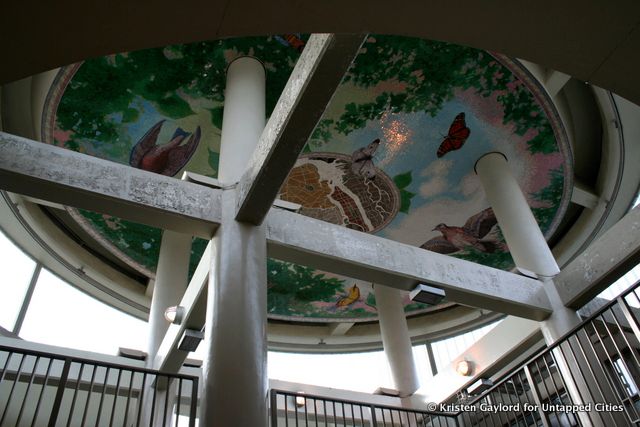
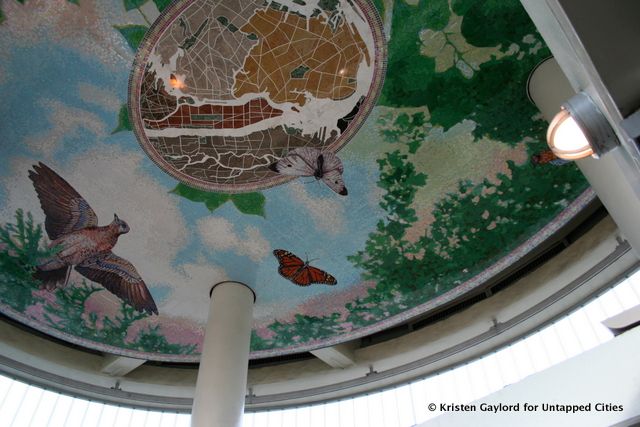
Cadence Giersbach, From Earth to Sky, 2006.
Finally I reached 14th Street — Union Square, a busy subway station if there ever was one. In it Mary Miss “intervened” in the station as it was undergoing renovation, and selected sections of the old structure and façade to retain and highlight as living history in Framing Union Square (1998). The older architecture, much more ornamental than its contemporary replacements, was one of my favorite pieces before I even knew it was part of Arts for Transit. It testifies to so many facets of New York life: the changing demographics, the centrality of public infrastructure, the development of design and public art, and the city’s interest in and awareness of its own history.
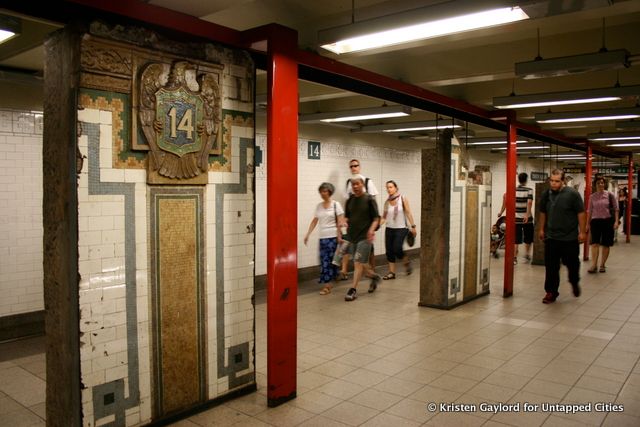
Mary Miss, Framing Union Square, 1998.
Overall there is less art along the G and L train lines, partly because there are fewer major stations. The much-blighted G train, especially, suffers a lack of aesthetic charm (in multiple ways), and I’d like to make an appeal for increased attention to these lines. But the works I viewed seemed to coalesce around two themes: the permanence and technological construction of the subway system, and the centrality of it in our lives as New Yorkers. If””knock on exposed brick””our city were ever to be buried in the earth and excavated by curious future archaeologists, they would get at least one thing right: ours is a culture on the go, and punctuating our movement with visual art testifies both to how much time we spend moving, and how highly we value art.
Get in touch with the author @kaygegay.
Subscribe to our newsletter